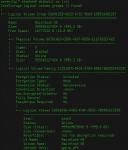I’ve dabbled with FreeNAS in the past and had such a great experience with pfSense (a similar FreeBSD-based project) that I jumped in with both feet on my home office server build. But my initial impressions were, frankly, terrible. I’ve got the system running and stable now, but I’m finding it difficult to recommend FreeNAS at this point.
logical volume manager
macOS Sierra Includes a New Apple File System, APFS
Although not discussed in today’s keynote, Apple is adding a new “universal” filesystem to iOS and macOS. Apple File System (APFS) will likely replace HFS+ as the default filesystem for Macintosh computers, iPads, and iPhones and brings a wealth of modern features. But judging from the initial developer documentation, that’s not going to happen for a few more years. And there’s still much confusion about how APFS and CoreStorage, introduced in Mac OS X 10.7, will interact.
How To Add a New CoreStorage Volume
After resizing the existing volume, I decided to create a new drive to store Final Cut Pro data. The CoreStorage createVolume command made short work of this task!
Non-Destructively Resize an Existing Drive with CoreStorage
My next step was to resize my existing drive to make room for a new logical volume. CoreStorage can resize a drive non-destructively, moving existing data aside and clearing capacity for other uses.
Non-Destructively Convert an Existing Drive to CoreStorage
The first step to storage bliss is conversion: Mac OS X can non-destructively convert an existing drive to CoreStorage! From there you’re free to resize it, create new volumes, and pretty much anything else you’re interested in doing to your drives!


